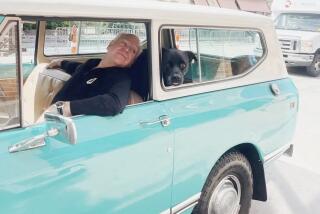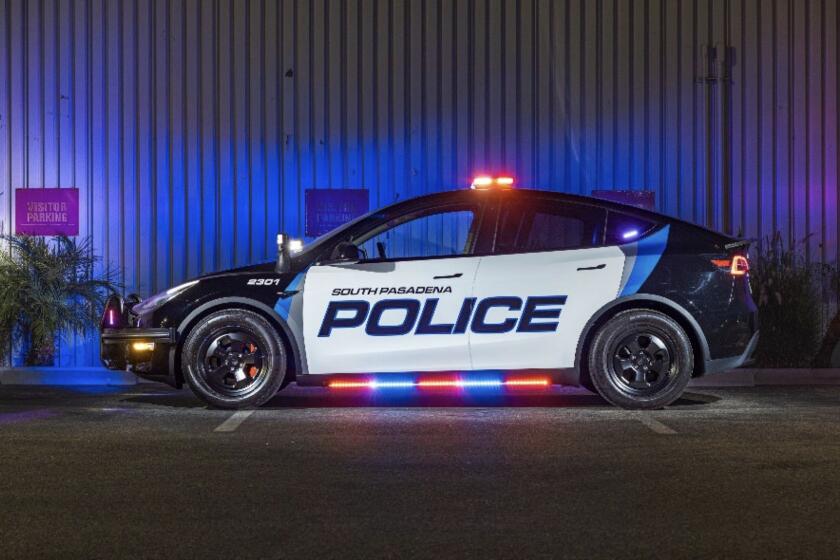Nissan takes wrong turn on Quest
Nissan nails unconventional. One has only to spend some time driving the all-electric Leaf, the spunky Juke crossover or the anomalous Murano CrossCabriolet to know this is a company that takes risks -- and succeeds from them.
So one would think such a forward-thinking carmaker would have no trouble bringing innovation and appeal to the table when it came time to redo something as blase as a minivan.
Nope.
The Nissan Quest returns to the U.S. for 2011 after a yearlong hiatus. This fourth-generation model is a little uncomfortable to look at and a chore to drive, and even its most redeeming feature, the interior, is marred by questionable ergonomics.
One wonders whether it should have stayed away for another year.
To be fair, this new Quest, which starts at $28,550 for the base S model, wasn’t explicitly designed for the U.S. market. Technically, this is a rebadge job; Nissan sells the original version in Japan as the premium Elgrand.
This sets it apart from competitors such as the Toyota Sienna, Honda Odyssey or Chrysler Town and Country, which were designed specifically for the recovering U.S. minivan market.
Nothing about the Quest’s styling indicates it belongs to the Nissan family, yet it yells “minivan” at you with the caps lock on. It’s narrower and taller than its peers, and the rear end is unapologetically boxy. The body cladding between the wheels hangs low, giving the impression it’s carrying a litter of mini minivans.
Beneath the Quest’s hood sits a great 3.5-liter V-6, which makes 260 horsepower and 240 pound-feet of torque. A derivative of this engine is found throughout Nissan’s lineup and that of its luxury division, Infiniti, and it’s a stellar piece of engineering.
Pity, then, that such a worthy engine, even in a minivan, is paired with such a worthless transmission. It’s a single-speed, continuously variable transmission, unlike most competitors, which use five- or six-speed automatic transmissions.
Because it’s never shifting, the transmission gets noisy when pushed toward its redline, say, while passing another car on the freeway.
It also seemed to sap power from the engine when accelerating from a standstill. At the point where you would expect a minivan with a geared transmission to shift into second, the Quest enters a black hole of torque, and the rate at which you were speeding from that stop sign slows noticeably. This will annoy everyone but those with the most pastoral of driving habits.
Nissan doesn’t provide zero to 60 acceleration times, but Car and Driver magazine says the Quest reaches that speed in 8 seconds, which is around half a second slower than its peers.
The Quest doesn’t even gain a bump in fuel economy with this transmission either. The Environmental Protection Agency rates the van at 19 miles per gallon in the city and 24 mpg on the highway. After 375 miles I saw 17.8 mpg. By comparison, I averaged of 19 mpg with the six-speed automatic in the Honda Odyssey I tested in January.
On the road, in addition to the noisy transmission, the advantage of having large side-view mirrors is overshadowed by the commotion they create. Otherwise, the Quest drives and handles with the comfort expected of a minivan, without other flaws or strengths to denote.
Step inside the Quest you’re treated to an attractive, functional, well-built space.
Mostly.
The biggest difference between this Nissan and others in this class is the functionality of the seats. In most vans, the third row of seats folds backward into the trunk well. In the Quest, they fold forward, as do the second row of seats, creating a completely flat floor for cargo without removing any seats.
After a week of throwing in bikes, surfboards and the odd houseplant, I came to appreciate the ease with which you can transform the Quest from passenger-friendly to cargo-friendly. Folding seats this way does make the cargo floor higher, so on paper the overall interior volume is less on the Quest than other minivans. But this deficiency is really only relevant if you regularly stack your cargo high.
The Quest seats only seven, whereas most other minivans today seat eight. Headroom and legroom is generous throughout the cabin, even in the third row when the middle seats are pushed all the way back on their tracks.
The fit and finish in the premium $43,740 LE model I tested was superb, and the amenities were befitting its price tag and similar to the layout and materials found on Infiniti vehicles.
The 8-inch touch-screen navigation system comes standard on the LE and features redundant buttons just below the screen. The system also features a 9-gigabyte hard drive, Bose sound system, XM traffic and weather updates, and a backup camera.
Also included is a DVD entertainment system, a blind-spot monitoring system and xenon headlights. The only option was the $1,350 moon roof package with two separate openings -- one in the front and one in back.
Yet this classy and intuitive layout was marred by the placement of the transmission’s shifter, and indeed this flaw exists on all new Quests. Because it is mounted high on the center console, to the left of the audio and climate controls, the shifter blocks the driver’s view of these buttons. It also means drivers regularly smack their hands into the shifter when they go to use the buttons.
The base Quest S features keyless entry, wood trim and a six-disc stereo system. The $31,700 SV adds items such as 16-inch alloy wheels, Bluetooth, power sliding doors, iPod connectivity, tri-zone climate control and a backup camera.
The $35,150 SL includes a power liftgate, leather seats, heated front seats and mirrors and 18-inch alloy wheels.
All 2011 Quests come with front- and side-impact airbags, anti-lock brakes and traction control and received the highest rating of “good” from the Insurance Institute for Highway Safety.
So the 2011 Nissan Quest is safe, functional and priced competitively against the rest of the segment. For some buyers, this will be enough to put them in the driver’s seat.
But those paying close attention to the rest of the segment will find that the Quest’s flaws run deep in comparison, and it just doesn’t have the moxie that Nissan has injected in its other products.







